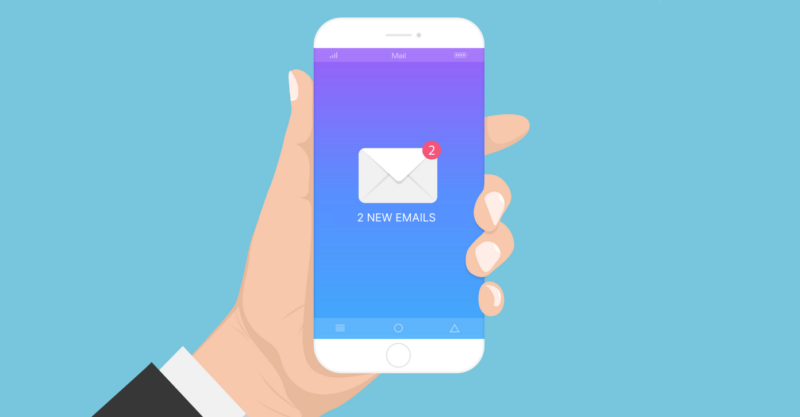Does Apple’s iOS15 Update Mean the End for Email Marketing?

Marketers are still dealing with the ramifications of the iOS14.5 update. But before we get the chance to step back and assess the impact this has had on our marketing effectiveness, Apple has thrown another spanner in the works with their latest iOS15 update.
With the impending move away from third-party cookies (yet another big change coming our way – who said marketing was easy?), marketers are starting to build a first-party data strategy to minimise the impact – and email marketing is becoming a more prevalent part of the mix.
So, what exactly is the iOS15 update – and what does it mean for marketers and email marketing?
What is the Apple iOS15 Update?
Today, email providers use tracking pixels in emails to collect information about customer mail activity.
If Apple Mail users opt into this new update, it will hide their IP address, location, and prevent senders from seeing when, and if, they’ve opened an email.
In Apple’s own words:
“In the Mail app, Mail Privacy Protection stops senders from using invisible pixels to collect information about the user. The new feature helps users prevent senders from knowing when they open an email, and masks their IP address so it can’t be linked to other online activity or used to determine their location.”
What do these changes mean for marketers?
In the grand scheme of things, not a lot.
There is a chance this update will hinder your ability to accurately target emails based on location and will inflate your email open rates, as emails will now be pre-loaded by Apple.
But, even though Apple Mail and Apple mobile devices make up over 35% of the global email provider market share, Google, Outlook, and other email providers haven’t announced similar privacy moves, which means their open and IP data could still provide solid tracking information for email marketers.
Were email opens a big deal anyway?
Honestly, not really.
If you think about it, how valuable was that data in the first place? We can never truly know if a contact has opened the email with intent or if they’ve just skipped past it while browsing through their inbox. It might even be a bot opening your emails!
Although some email providers, like HubSpot, show you a rough estimate of how long a contact has spent viewing your email, these metrics can also be misleading.
In HubSpot, to be classed as having ‘read’ an email, a contact has to spend at least 8 seconds on it – which is no time at all when you think about it.
So, if all a contact does is open your email, you can’t guarantee that they are engaged with your content – or your brand.
But just because open rates are taking a hit, subject lines are still important. They’re the first impression so make it count – and make it relevant. Without a snappy eye-catching subject line, you have no chance of getting any engagement on your email.
So, what email marketing metrics should you focus on instead of open rates?
Rather than focusing on vanity metrics like opens rates, look for the metrics that show real intent and bring value to the business.
These metrics include things like:
- Click rates
- Content downloads
- Website behaviour/pages viewed
- ROI
Looking to increase ROI from email marketing? Try our free marketing ROI calculator >>
What does the future look like for email marketing?
Email is one of the longest standing members of the digital marketing mix. And despite repeated claims that email is dead – it’s still here. And it’s more important than ever.
It may be facing a new challenge with Apple’s iOS15 update, but it’s no stranger to roadblocks. Let’s cast our minds back to two major updates that were predicted to mark the end of email marketing:
- Gmail Tabs
Back in 2013, Gmail added a new feature to its inbox: the ability to file emails into different folders including one called Promotions. This was introduced to help improve deliverability and open rates, and to decrease spam complaints.
Marketers were worried this would mean their emails would get lost in inboxes and their stats would take a plunge.
The reality? Having a folder that would automatically separate marketing – or promotion – emails from everything else creates more transparency with email recipients and actually makes them easier to find.
Housing these emails in a separate inbox also means that unengaged contacts are less likely to unintentionally engage as they can’t be clicked on accidentally while scrolling through other emails. If your contacts are engaged with your brand, they’ll know to check the Promotions tab to find your emails.
- GDPR
In 2018, a marketing legislation Goliath was introduced – GDPR. Those four letters would send shivers down any marketer’s spine.
This change placed the power back into a contact’s hands when it came to the storage of personal information as, unlike previously, anyone on a contact list had to actively opt-in to receiving communications. Marketers everywhere had nightmares about email lists reducing to zero and email becoming a dead weight in the marketing strategy (not to mention the huge fines as well!).
The reality? According to Litmus, 60% of brands complying with GDPR saw their email lists shrink by less than 10%. And even though some may see that as a huge dip, remember that the ones who opted out weren’t valuable contacts to have. There’s no point having a tonne of subscribers that aren’t engaged.
People aren’t going to choose to subscribe if they don’t care about what you have to say!
4 tips for building a strong first-party data list
As we touched on at the beginning of this blog, marketers are working hard to ensure they have a robust first-party data strategy in place before third-party cookies are removed.
From email marketing to improving your social media campaigns, having the right data in place is key to continue to grow in times of increased change.
The world’s most valuable resource is no longer oil; it’s data.
So essentially, your database is one of your strongest assets – and it needs to be nurtured. But before it can be nurtured, you have to actually get the data in the first place.
Here are our top tips to help you build a strong database to use for email marketing:
- Re-evaluate your signup process.
- Use surveys to understand what your database expects from you; what they like, don’t like to ensure you’re always relevant to boost engagement.
- Make sure you have the correct and relevant data to help you deliver the right message, at the right time, to the right person.
- Store that data in the same place.
The verdict
At first glance, it might seem like the iOS15 update is just another hurdle for marketers. But in the wider picture, the impact on email marketing won’t be as catastrophic and some might think.
With the removal of cookies looming and email marketing becoming a bigger part of the mix for a lot of marketers, the recent update provides a chance to re-evaluate your email campaigns and the value they bring to your business – as well as making sure your first-party data is ship-shape to achieve marketing success in a cookieless world.
If you’re working on your post-cookie marketing strategy, you can download our eBook below for some handy tips.
How to Achieve Marketing Success in a Cookieless World
Own your marketing data & simplify your tech stack.
Have you read?
Chrome’s announcement on dropping cookie opt-in last month closed the door on a 5 year saga for marketers. But what is the landscape like in 2025 for cookie-based measurement?
Generative AI is transforming the way that marketers plan and assemble content for their Paid Ads. As big platforms like Google, Meta and TikTok increasingly build the tools needed to...
In a surprising move that has sparked heated debate, Mark Zuckerberg announced on his Instagram that Meta will be reducing its levels of censorship and in particular fact-checking on its...



